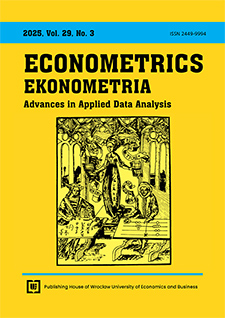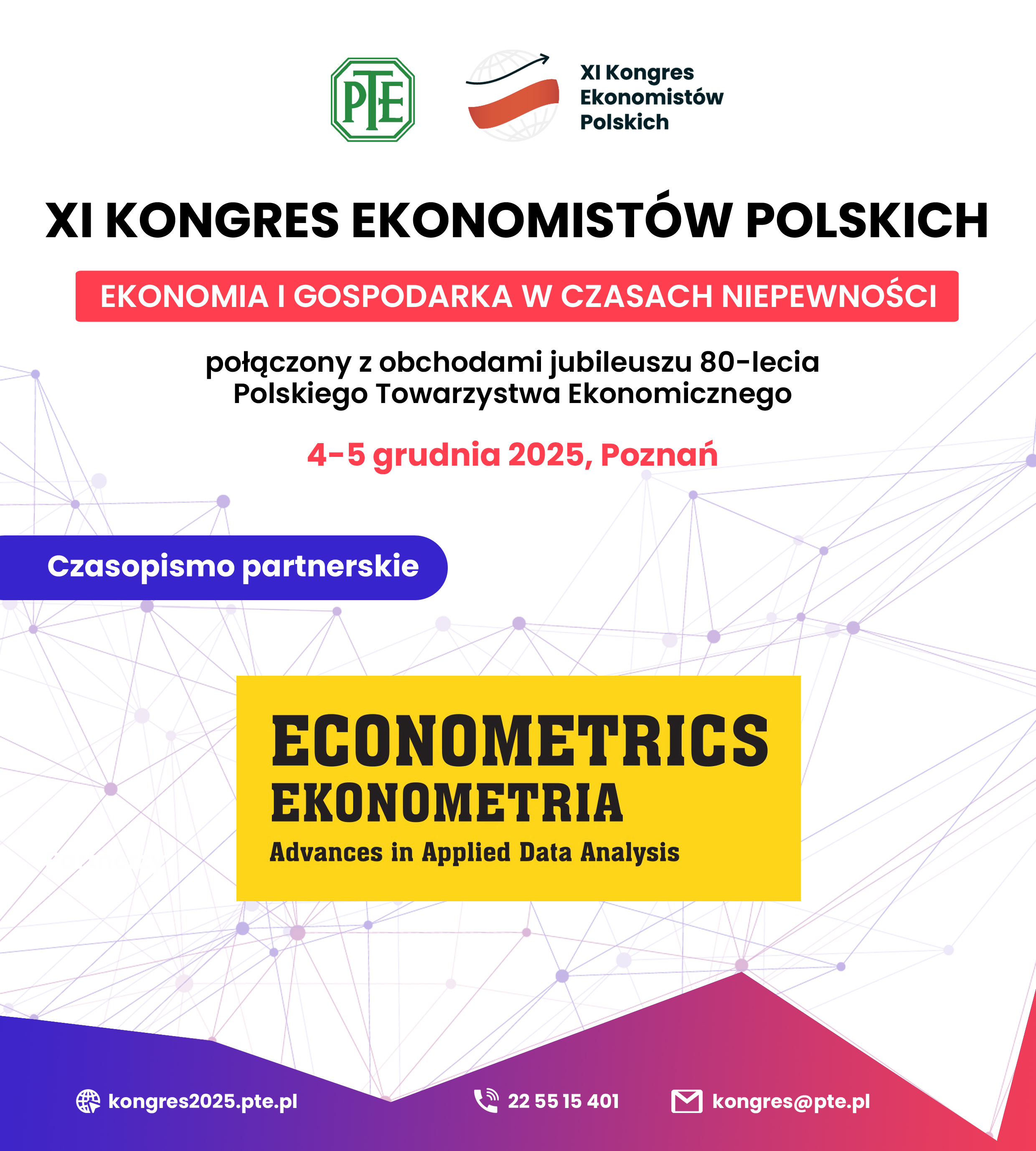Rethinking Scale in Applied Econometrics: Practical Impacts of Log Transformations on Model Performance
DOI:
https://doi.org/10.15611/eada.2025.3.01Keywords:
log transformation, econometric modelling, MENA region, stationarity tests, measurement scales, model diagnosticsAbstract
Aim: This study examines the practical impact of measurement scale choices, particularly logarithmic transformations, on the accuracy, reliability, and interpretability of econometric models using macroeconomic indicators from the MENA region.
Methodology: Using real-world MENA data, multiple techniques (OLS, Fixed Effects, Random Effects, GMM) were applied with both raw and log-transformed variables to compare outcomes for variance stability, normality, stationarity, and heteroskedasticity.
Results: Log transformations substantially improve model diagnostics by stabilising variance, enhancing normality, and reducing heteroskedasticity, yielding more precise estimates. However, they alter coefficient interpretation, highlighting a trade-off between statistical robustness and economic meaning.
Implications and Recommendations: The findings underscore the critical need for appropriate data transformations to ensure valid and interpretable results, offering practical guidance for researchers and policymakers in model specification for policy analysis and forecasting.
Originality/Value: This study provides a novel comparative exploration of transformation effects across methodologies and one of the few region-specific investigations using MENA data, delivering actionable insights for methodological and applied research.
Downloads
References
Angrist, J. D., & Pischke, J. S. (2009). Mostly Harmless Econometrics: An Empiricist's Companion. Princeton University Press.
Arellano, M., & Bond, S. (1991). Some Tests of Specification for Panel Data: Monte Carlo Evidence and an Application to Employment Equations. The Review of Economic Studies, 58(2), 277-297.
Arellano, M., & Bover, O. (1995). Another Look at the Instrumental Variable Estimation of Error-Components Models. Journal of Econometrics, 68(1), 29-51.
Baltagi, B. H. (2005). Econometric Analysis of Panel Data (3rd ed.). Wiley.
Barro, R. J. (1991). Economic Growth in a Cross Section of Countries. The Quarterly Journal of Economics, 106(2), 407-443.
Blundell, R., & Bond, S. (1998). Initial Conditions and Moment Restrictions in Dynamic Panel Data Models. Journal of Econometrics, 87(1), 115-143.
Box, G. E. P., & Cox, D. R. (1964). An Analysis of Transformations. Journal of the Royal Statistical Society, Series B (Methodological), 26(2), 211-252.
Cameron, A. C., & Trivedi, P. K. (2005). Microeconometrics: Methods and Applications. Cambridge University Press.
Campbell, J. Y., & Shiller, R. J. (1988). The dividend-price ratio and expectations of future dividends and discount factors. The Review of Financial Studies, 1(3), 195-228.
Deaton, A., & Muellbauer, J. (1980). An almost ideal demand system. The American Economic Review, 70(3), 312-326.
Greene, W. H. (2018). Econometric Analysis (8th ed.). Pearson.
Gujarati, D. N., & Porter, D. C. (2009). Basic Econometrics (5th ed.). McGraw-Hill.
Hamilton, J. D. (1994). Time Series Analysis. Princeton University Press.
Hansen, L. P. (1982). Large Sample Properties of Generalized Method of Moments Estimators. Econometrica, 50(4), 1029-1054.
Hastie, T., Tibshirani, R., & Friedman, J. (2009). The Elements of Statistical Learning: Data Mining, Inference, and Prediction (2nd ed.). Springer.
Hausman, J. A. (1978). Specification Tests in Econometrics. Econometrica, 46(6), 1251-1271.
Jarque, C. M., & Bera, A. K. (1987). A Test for Normality of Observations and Regression Residuals. International Statistical Review/Revue Internationale de Statistique, 55(2), 163-172.
Kennedy, P. (2008). A Guide to Econometrics (6th ed.). Wiley-Blackwell.
Koenker, R. (2005). Quantile Regression. Cambridge University Press.
Little, R. J. A., & Rubin, D. B. (2002). Statistical Analysis with Missing Data (2nd ed.). Wiley.
Mankiw, N. G. (2014). Principles of Economics (7th ed.). Cengage Learning.
Muellbauer, J. (1976). Community preferences and the representative consumer. Econometrica: Journal of the Econometric Society, 979-999.
Nelson Jr, H. L., & Granger, C. W. J. (1979). Experience with using the Box-Cox transformation when forecasting economic time series. Journal of Econometrics, 10(1), 57-69.
Seabold, S., & Perktold, J. (2010). Statsmodels: Econometric and Statistical Modeling with Python. Proceedings of the 9th Python in Science Conference.
Solow, R. M. (1956). A Contribution to the Theory of Economic Growth. The Quarterly Journal of Economics, 70(1), 65-94.
Stock, J. H., & Watson, M. W. (2020). Introduction to Econometrics (4th ed.). Pearson.
Varian, H. R. (2014). Big Data: New Tricks for Econometrics. Journal of Economic Perspectives, 28(2), 3-28.
White, H. (1980). A Heteroskedasticity-Consistent Covariance Matrix Estimator and a Direct Test for Heteroskedasticity. Econometrica, 48(4), 817-838.
Wooldridge, J. M. (2010). Econometric Analysis of Cross Section and Panel Data (2nd ed.). MIT Press.
Downloads
Published
Issue
Section
Categories
License
Copyright (c) 2025 Chellai Fatih

This work is licensed under a Creative Commons Attribution-ShareAlike 4.0 International License.
Accepted 2025-09-09
Published 2025-10-30









